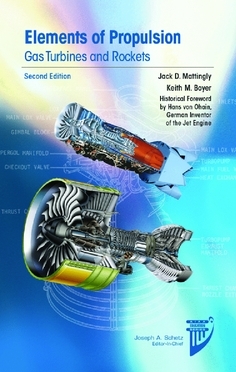
Elements of Propulsion is an excellent textbook for any general undergraduate-level aerospace propulsion course. There is an extremely useful introduction to the area covering the breath of propulsion technologies from small and large civil aviation engines to rocket technology. In addition, the key thermofluids fundamentals are covered in two introductory chapters.
The book then comprehensively covers the core aspects of gas turbine technology focusing on both cycle analysis as well as component analysis. There is a final chapter in the book that focusses on chemical rocket technology. In addition to the printed text, there is a wealth of online supporting material, including an additional chapter on propeller analysis and technology.
While the main focus of the book is gas turbine engines, the sections on rockets and propellers (in digital format) ensure that the breath of aerospace propulsion technology is covered in sufficient detail for most undergraduate courses.
The additional online resources also include a number of programmes that can be used to analyse the performance of various engine cycles and also undertake more detailed analysis of component design, such as compressor and turbine design. These tools are an interesting addition to the text and help support understanding of some of the more complex design issues for gas turbine engines and are used effectively throughout the text. They could also be of use for undergraduate students wishing to undertake projects in the study of gas turbine engine cycle analysis and component design; however, further documentation on the details of the models and assumptions employed in these programmes would be helpful for this type of use.
In summary, this is a comprehensive undergraduate-level textbook for general aerospace propulsion with an excellent set of supporting material.


